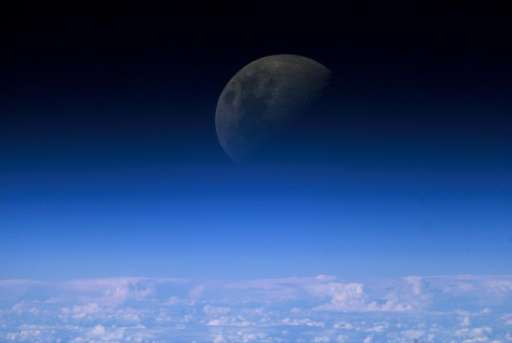Moon to spoil meteor show: astronomers

A bright Moon will outshine the annual Perseids meteor shower, which will peak Saturday with only a fifth the usual number of shooting stars visible to Earthlings, astronomers say.
The Moon will be more than half-full, in a so-called gibbous phase, which means its light will spoil stargazers' view in a similar way to that of urban light pollution.
"To be honest, it's not a good year" for the Perseids, said Robert Massey, acting executive director of the Royal Astronomical Society (RAS) in London.
"You might, if you're lucky, see maybe 20 an hour," he told AFP.
The Perseids happen when Earth hits a belt of debris left behind by the comet Swift-Tuttle on its elongated, 133-year orbit around the Sun.
Each shooting star is a piece of comet dust, burning up from friction as it hits Earth's atmosphere.
Normally, Northern Hemisphere viewers are treated to a spectacle of about 100-120 visible shooting stars per hour when the phenomenon peaks around mid-August—depending on the Moon and the weather.
Last year, there was an unusual "outburst" with more than double the usual fireball activity as Earth passed through especially dense "ribbons" of debris within the comet's dust belt.
"This year, we are expecting enhanced rates of about 150 (meteors) per hour or so, but the increased number will be cancelled out by the bright Moon, the light of which will wash out the fainter Perseids," states a NASA blog.
The Moon was full on August 7, and will have waned to approximately 80 percent illumination by Saturday.
Not all is lost
"This is not much better than a full moon and will certainly pose a challenge in viewing the Perseids this year," said the International Meteor Organisation (IMO).
This means it would make little difference if you sought out a rural area with little artificial light pollution—conditions usually recommended for meteor watching.
The experts advised trying to catch a glimpse before the Moon rises around 11:00pm local time on Friday.
Although there will be fewer at that hour, "these meteors tend to be very long and long-lasting so it is definitely worth trying to see some of them," according to the IMO website.
Later in the night, it would be best to turn one's back on the Moon to try and catch a glimpse of the brightest-burning meteors.
The show in 2018 should be better, said Massey, when a thin crescent moon will set early, leaving a dark canvass for the Perseids to do their magic.
The yearly show got its name because the stars appear to fly out of the constellation Perseus.
It is also known as the "Tears of St. Lawrence" in honour of a Christian saint tortured to death by the Romans in AD 258.
According to legend, Laurentius was martyred on a iron grill over a fire, during which ordeal he is said to have quipped to his persecutors: "Turn me over. I'm done on this side!"
He is a patron saint of cooks.
© 2017 AFP





















